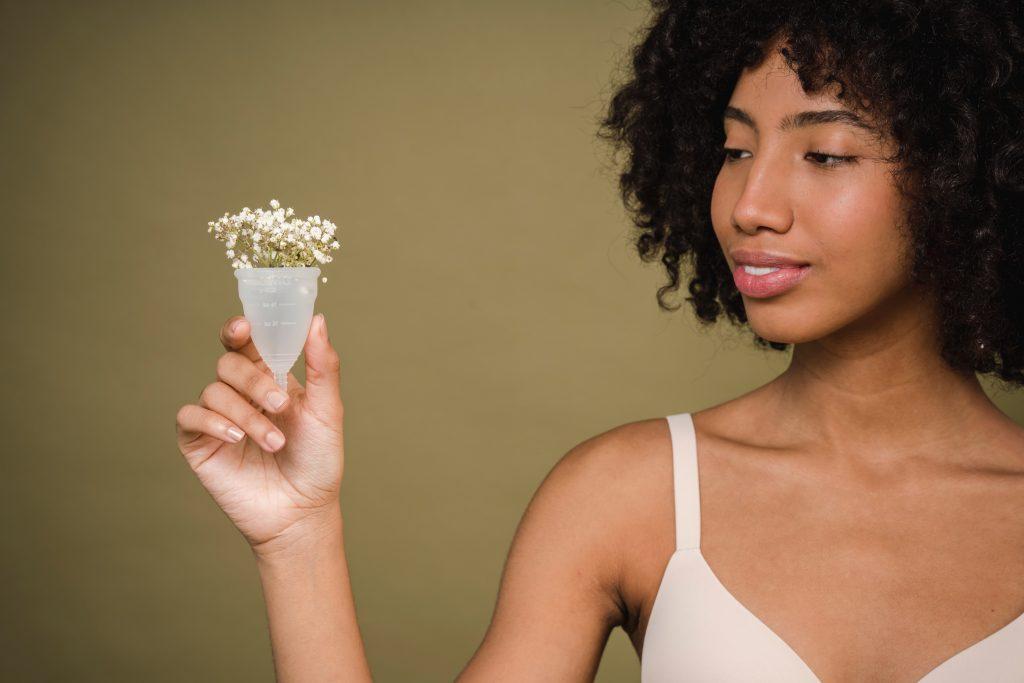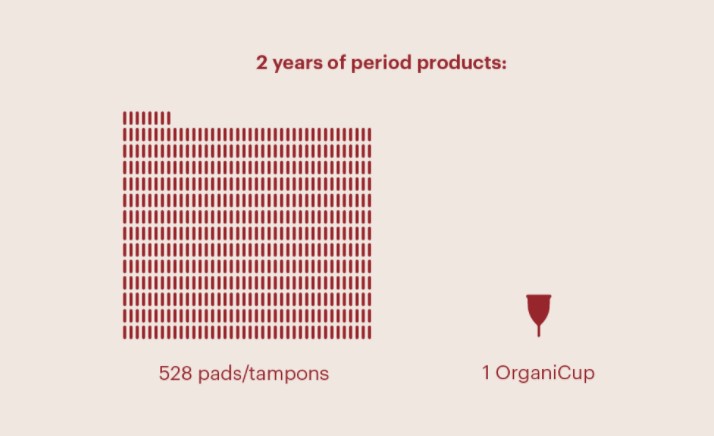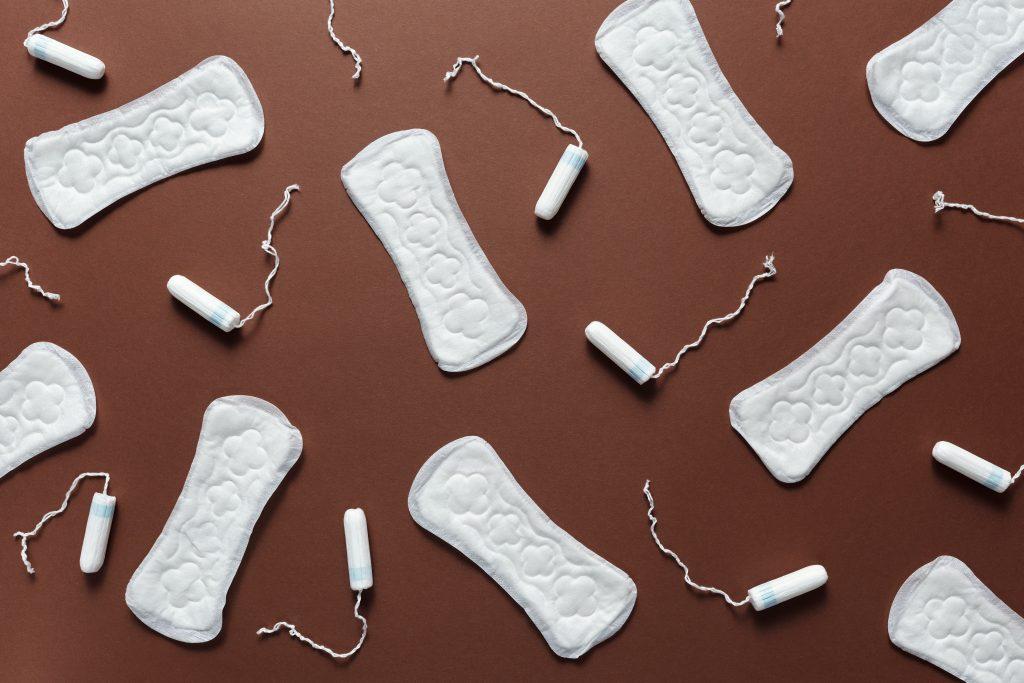From solar farms and electric vehicles to everyday items, sustainable green innovations are everywhere. Some of our biggest needs have come a long way, including sustainable sources of food and renewable energy. Yet when it comes to menstrual products, disposable pads and tampons can be costly for the user and the environment. Fortunately, reusable alternatives have become popular due to their environmental and financial benefits. Older eco-conscious attempts at sustainable menstrual products have included the use of sea sponges, however this is extremely unsanitary and unsafe for use. This is where sustainable menstrual cups come in.
HISTORY OF THE MENSTRUAL CUP

The first menstrual cup prototypes were patented in the 1860s. However, most of them never made it to the market. In 1937, American actress Leona Chalmers patented a modern menstrual cup design. Similar to those today, latex was used. Soon after, a shortage of latex rubber occurred due to World War II. This forced the company to stop production. At the beginning of the 21st century, menstrual cups would begin to use new medical-grade silicone. This was a great success. This bacteria resistant and hypoallergenic material became the standard for sustainable menstrual cups today. Not only is silicone safer to use, but it is also a more environmentally-friendly ingredient.
ENVIRONMENTAL AND FINANCIAL BENEFITS
Compared to disposable period products, menstrual cups have many environmental and financial benefits. The average person creates 136 kg of waste in their lifetime through the use of disposable period products (Diva Cup, 2020). Now, multiply this number by around half the planet’s population. This enormous amount of waste eventually ends up in landfills or in our oceans. In addition, most pads contain polyethylene plastic – a harmful pollutant. Chemicals found in tampons can also leach into the soil, releasing into our waterways (AllMatters, 2020). These materials are often extracted through destructive means. Extracting fossil fuels for plastic and producing cotton are both resource-intensive processes.

Source: AllMatters.
Additionally, the cost of period products can be quite high in some countries. On average, an individual may use 11,000 items over their lives. This adds up to around USD $6,360 per person spent solely on period products. In contrast, menstrual cups cost between $20 to $40 USD each. They can even last a few years if properly looked after.
HELPING THE THIRD WORLD
In much of the world, women are burdened by reproductive and parenting responsibilities. This is especially true in rural agricultural communities. For those that barely have enough to survive, women often have fewer opportunities for education, human rights, money, and healthcare. Because of this, they often face adversity related to their menstrual hygiene. Sustainable period products can help disadvantaged women and people who menstruate. After all, they deserve to have more dignity and control over their lives.

Millions across the world do not have access to menstrual hygiene products. Why? They cannot afford them. Access to healthy, sustainable, and affordable period products, such as menstrual cups, can make a difference to entire communities. In addition, health and sexual education can also help push for gender equality and help raise families out of poverty. Providing good sanitation also improves their hygiene and general health.
Organisations such as Lunette strive to break the prevalent taboo on periods in third world countries. Projects such as The Cup deliver hygiene packages to women and girls. Having these resources allows them to attend school during their period.
MORE THAN A CUP
Since their conception, menstrual cups have shifted from just another period product to a way of creating positive change. This eco-friendly product provides an affordable alternative to traditional, disposable items. Yes, menstrual cups are sustainable innovations for individuals. But, they are also gateways to drive further progress in delivering basic human rights in third world countries. At THRIVE, we value green innovation, no matter how small.
Projects such as The Cup are also working hard to make a difference. They seek to replace the shame attached to the natural process of menstruation with value and power. Periods are no longer a thing to be hidden and ashamed of. They can empower women and make sustainable innovations available to all.